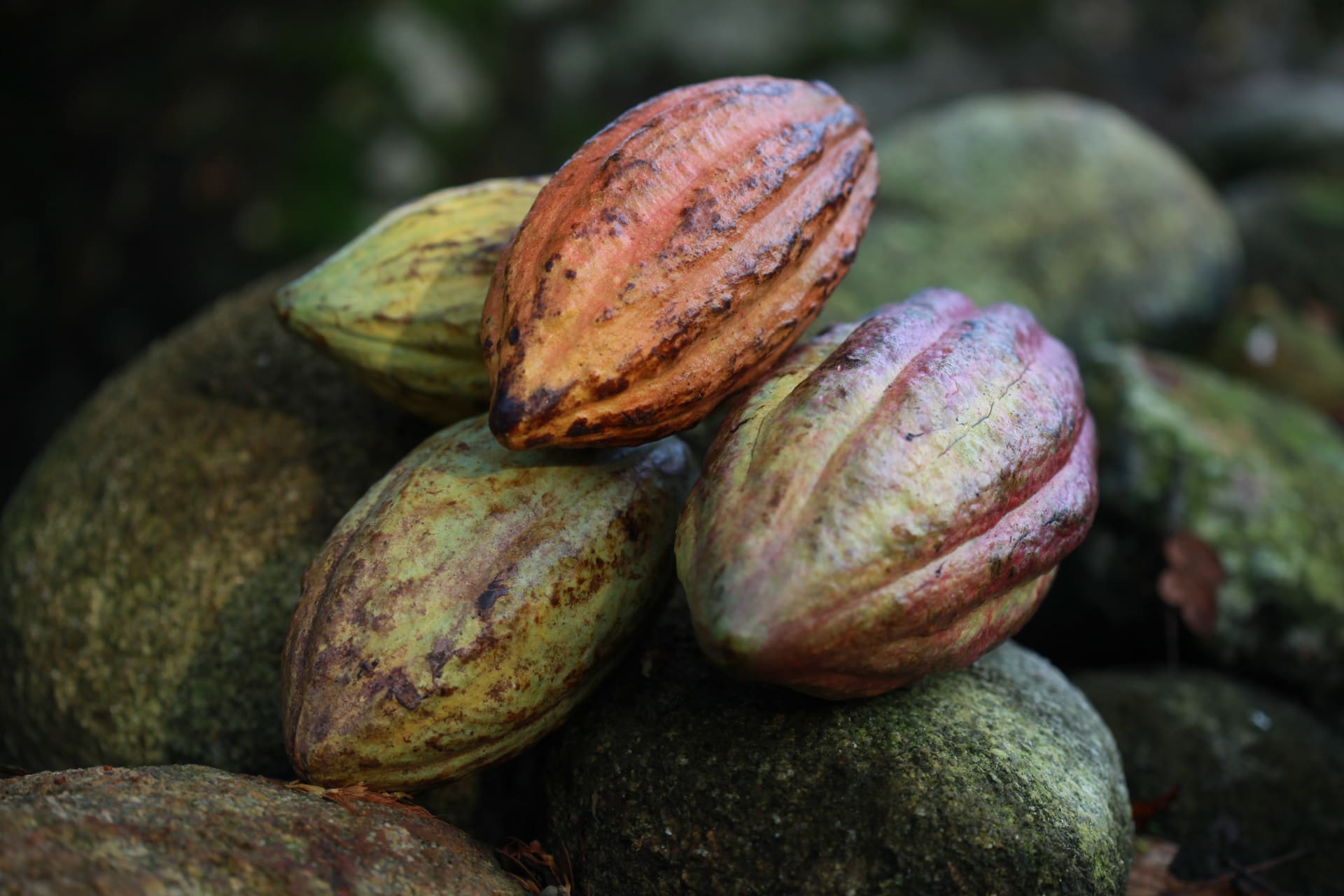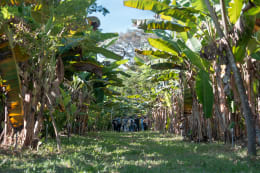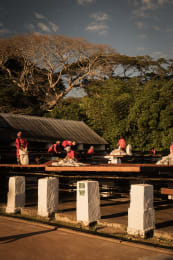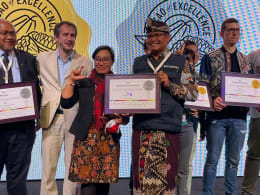Preserving the soil and flavors
Agroecological cocoa-growing in Haiti
By Julien Desmedt, Sourcer
Buoyed by the results from action we had taken together over the previous three years (2019/2020/2021), in 2022 Valrhona and its Haitian partner Feccano (or the Federation of Northern Cocoa Cooperatives) decided to relaunch a new three-year plan running up to 2024, together with the French NGO AVSF (Agronomes et Vétérinaires Sans Frontières). Regenerating partner-producers’ “creole” mixed-crop gardens so that we can demonstrate that profitable but environmentally-friendly cocoa farming is possible remains our ambition.
The project also aims to streamline these approaches and promote them on a national scale, so that as many families as possible can do the same in their plots in Haiti. 89 new producers have agreed to participate in this project, which means we have the potential to regenerate 40 additional hectares of land between now and 2024. This is in addition to the 12 hectares of plots regenerated by 31 producers in 2022, work which has entailed pruning cacao trees, planting new trees, introducing food crops and composting. Plots involved in the project in previous years continue to produce cocoa harvests that are more than 50% higher compared with the year the project began.
- 6,000 cacao plants have been distributed and planted
- 1,650 trees have been distributed (cashew, citrus and so on)
- More than 4,000 food crop plants have been distributed (pineapple, taro, ginger, yams, etc.)
- More than 24m3 of compost has been distributed
- Over 157 pieces of equipment have been distributed (pruning shears, picks, machetes, etc.)
AGROPECUARIA SANTA ANA, VENEZUELA
By Julien Desmedt, Sourcer
We have been working with our partner Casa Franceschi for 25 years to develop four rare varieties of cocoa on a plot of more than 20 hectares in the Carupano region. This project chiefly involves setting up plantations, grafting and shade management.
Time and patience will allow us to get to know these new varieties so that we can ultimately fully promote their aromatic qualities and implement the best fermentation and drying protocols that will allow us to fully reveal the organoleptic properties of these cocoa varieties. This project has led to the hiring of 12 people who work on a daily basis to set up and develop this plantation.
GRAN BLANCO NURSERY CONSERVATORY, PERU
By Stéphane Sabourin, Sourcer
Since 2014, we have been involved in the conservation of an endemic variety in the Piura region in northern Peru, the Gran Blanco cocoa tree. Together with our partner, the Norandino Cooperative, we have set up a nursery conservatory in the village of La Quemazón.
In addition to protecting cocoa biodiversity, it provides farmers with several tens of thousands of Gran Blanco plants each year. The La Quemazón Gran Blanco cocoa is regularly recognized for its quality: it was awarded the best cocoa in Peru at
the 2020 national competition and the silver medal of the Cocoa of Excellence in Paris in 2021.



